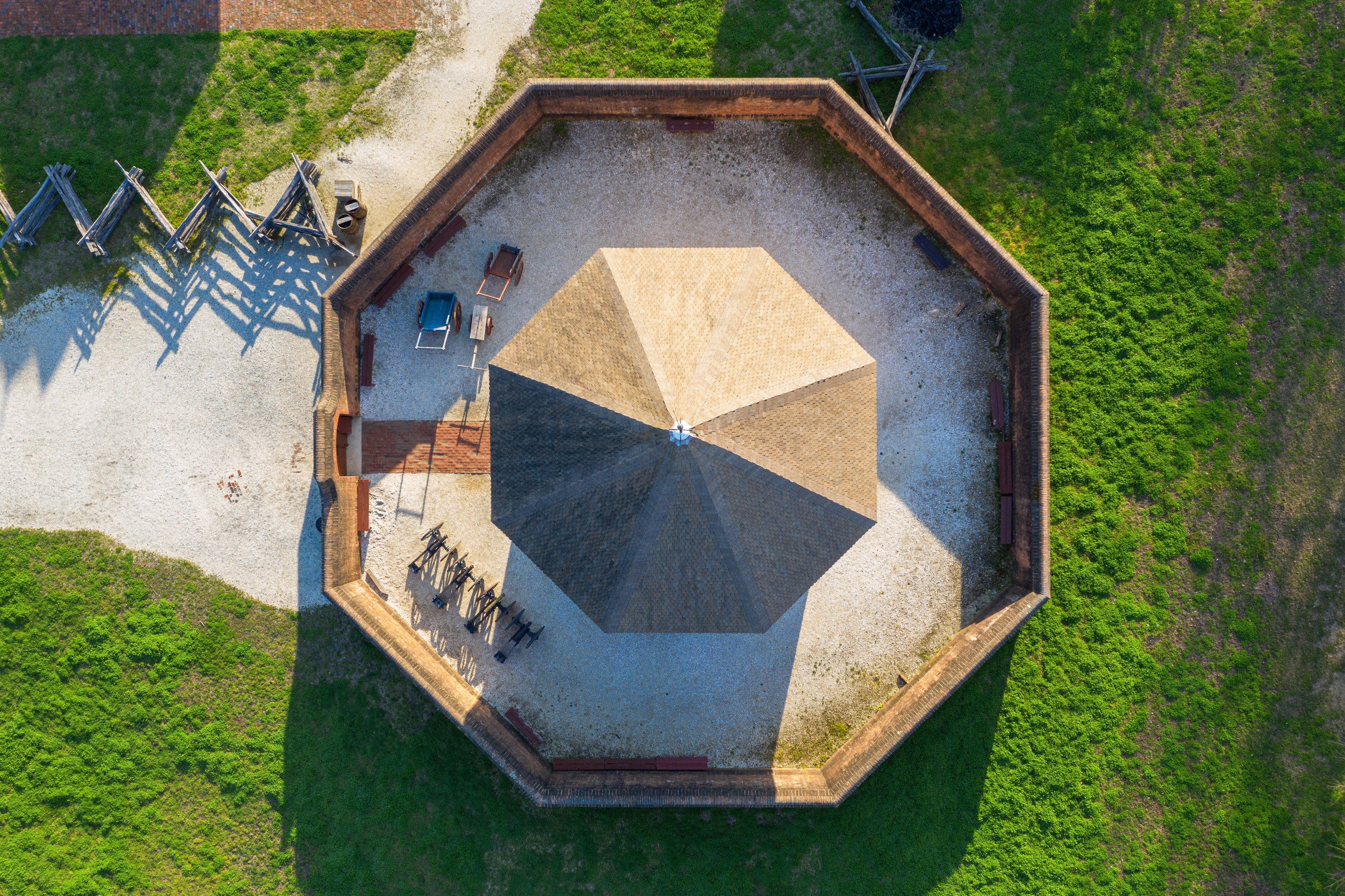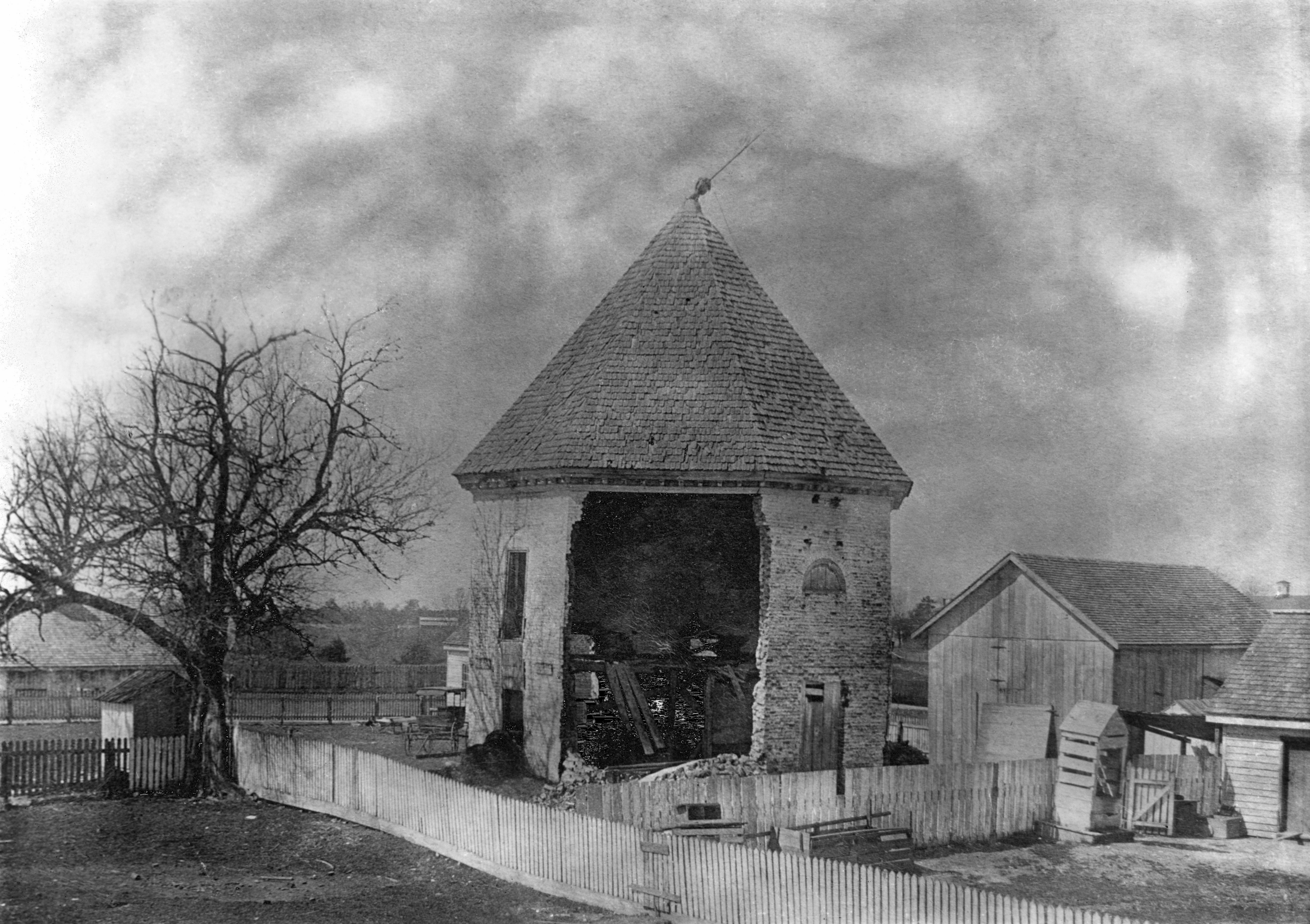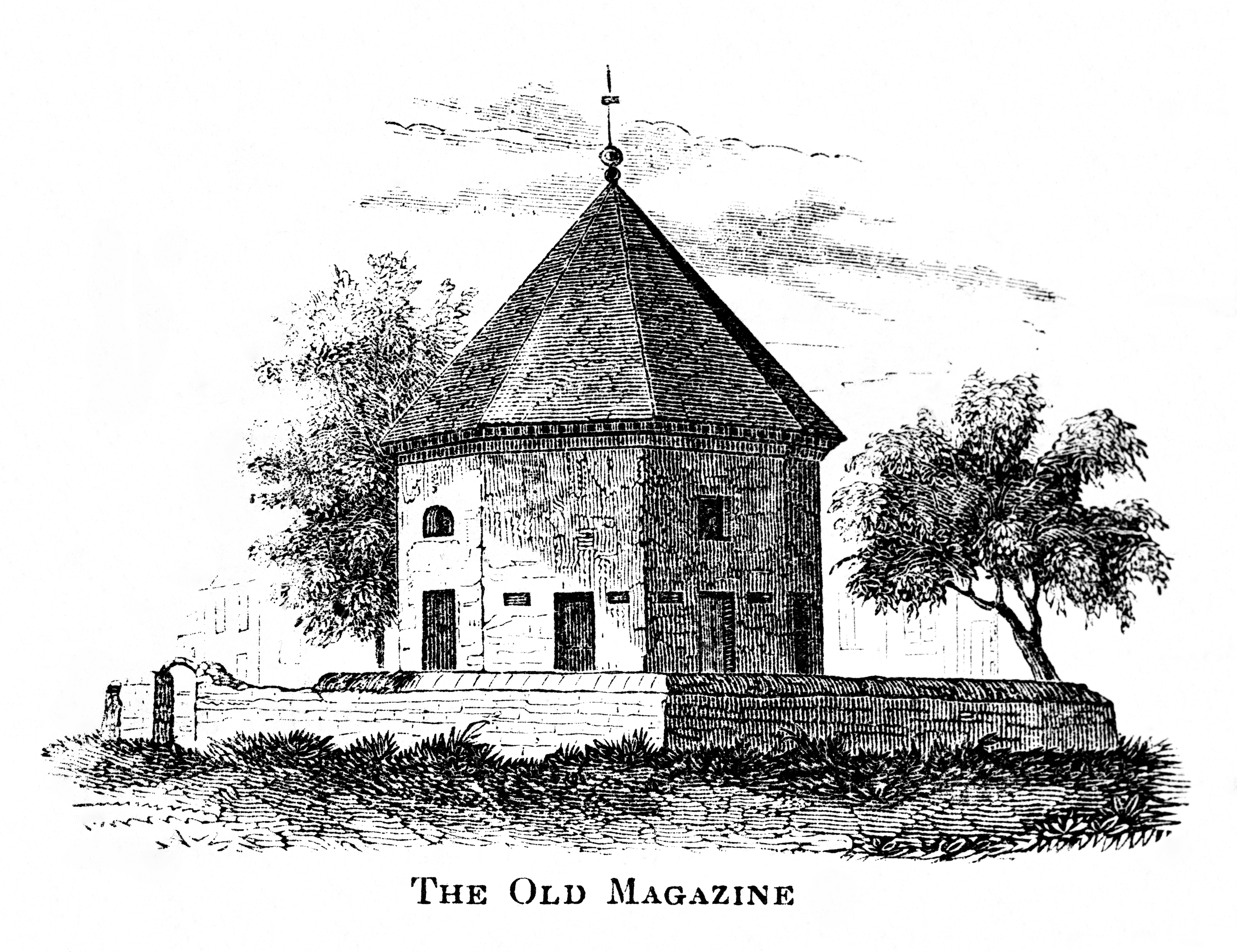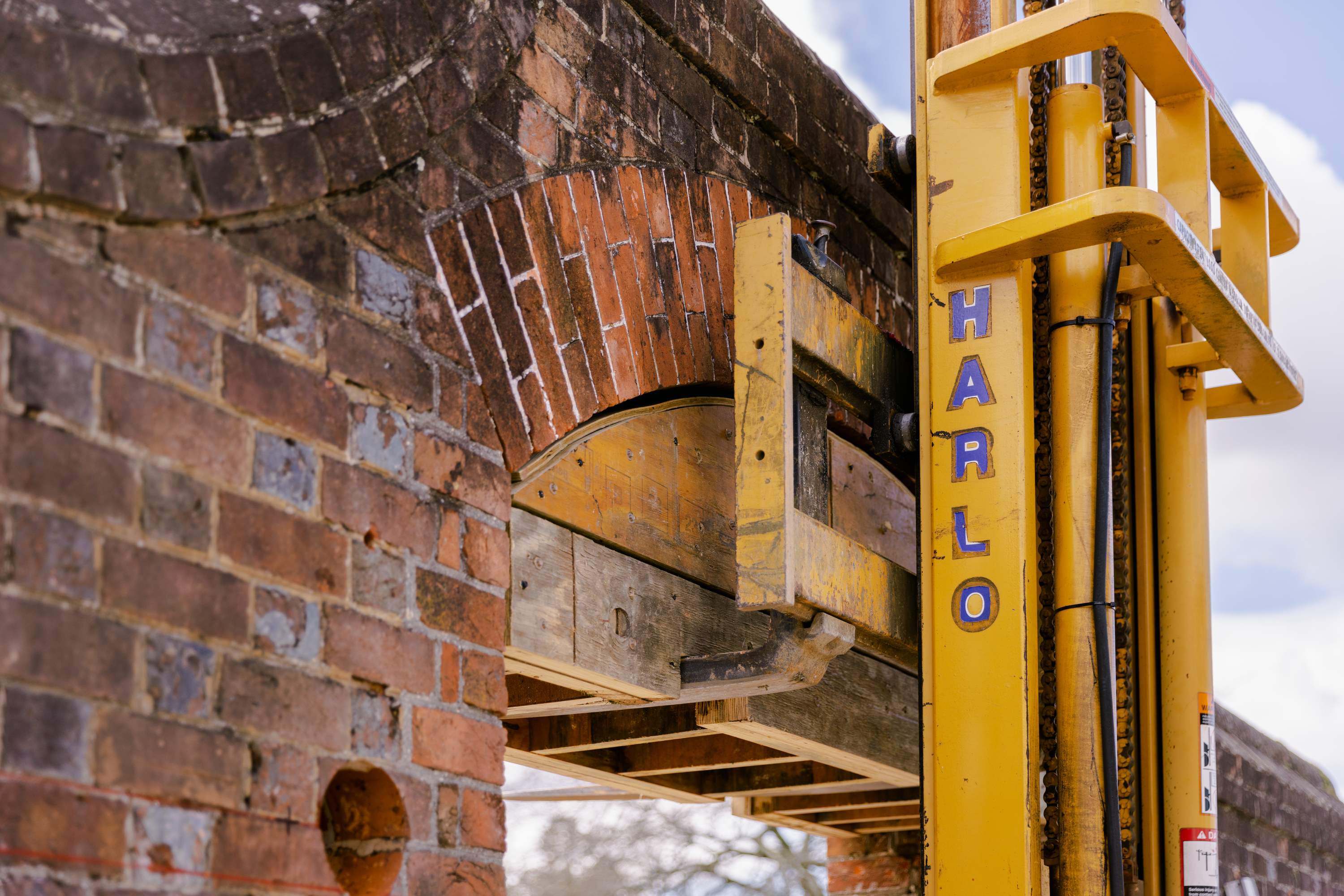The year 2026 marks the 250th anniversary of the Declaration of Independence. Cardinal News has embarked on a three-year project to tell the little-known stories of Virginia’s role in the march to independence. This project is supported, in part, by a grant from the Virginia American Revolution 250 Commission. Find all our stories from this project on the Cardinal 250 page. You can sign up for our monthly newsletter:
The Magazine is perhaps one of the most recognized sites within Colonial Williamsburg’s Historic Area. The structure, one of the oldest surviving buildings associated with the American Revolution, played a key role during the time period. Architectural historians and archaeologists are in the midst of an extensive project that will restore the Magazine to what it looked like at the onset of the Revolutionary War, and, in particular, during the famous Gunpowder Incident, which is marking 250 years this month. 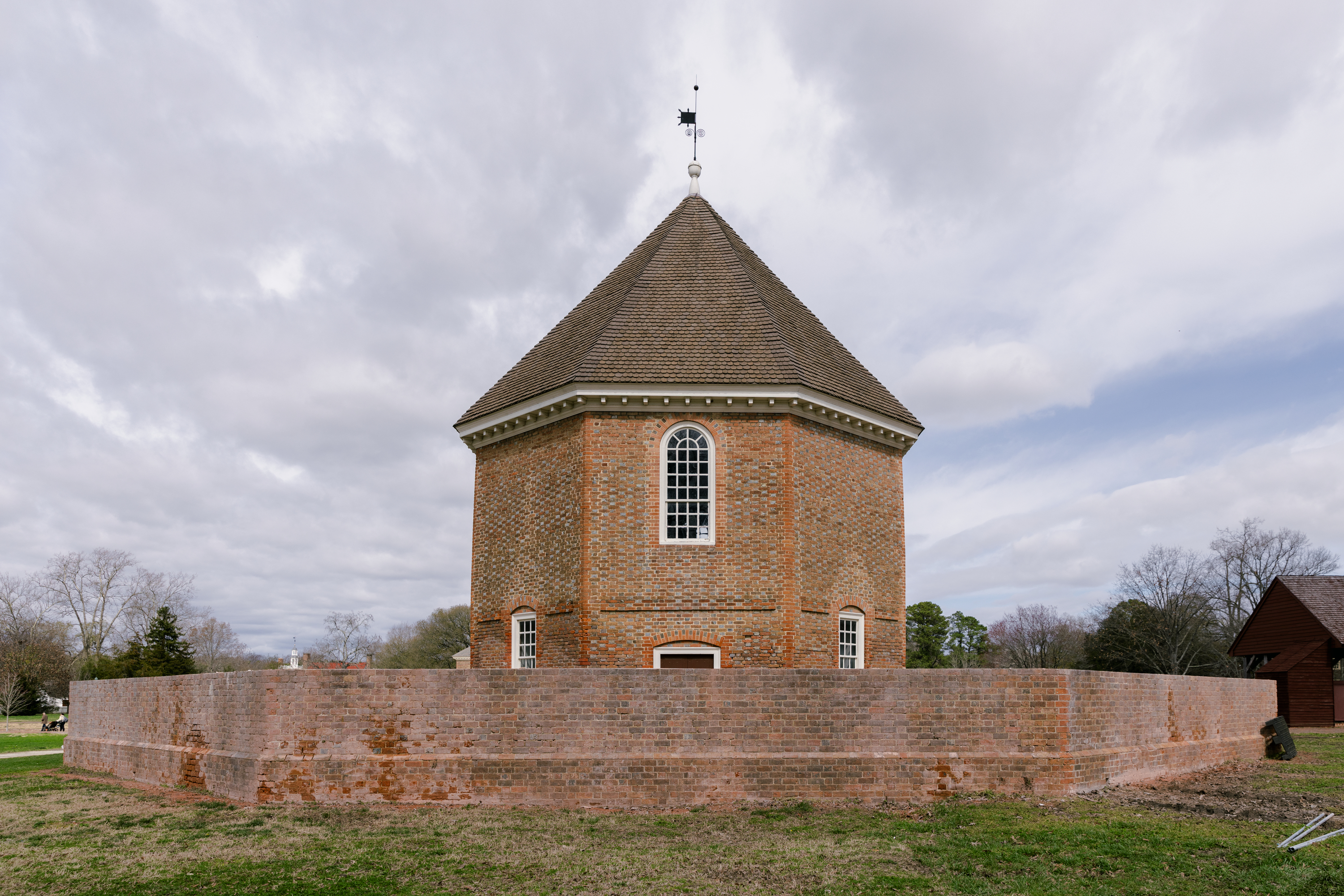
on the lowering of the outer wall on March 8, 2024.
Courtesy of Brendan Sostak, The Colonial Williamsburg Foundation.
On April 21, 1775, a group of royal marines, under the orders of Virginia Governor John Murray, the Fourth Earl of Dunmore, swiped fifteen half barrels of gunpowder and disabled many of the firearms stored in the Magazine in what has come to be known as the Gunpowder Incident. The seizure provoked a fierce response from residents who, along with a militia led by Patrick Henry, threatened an attack on the Governor’s Palace.
Katharine Pittman and Kurt Smith are two Colonial Williamsburg researchers and historic interpreters (Pittman portrays Martha Washington, while Smith portrays Thomas Jefferson) who led efforts for recent special programming in commemoration of the Gunpowder Incident. They suggest that the event “could have been the second shot heard around the world,” had things gone a different way. The Gunpowder Incident is one of many that “pushed the needle of Virginia sentiment away from affection to England and toward the necessity of taking up arms against the Crown. The Gunpowder Incident moved the critical mass of Virginia toward independence.”
Colonial Williamsburg’s archaeological team wanted to ensure the Magazine is depicted as accurately as possible as celebrations for the semiquincentennial get underway. The current renovation project, the third such one for the Magazine, started in 2021. The Magazine is anticipated to reopen next year to coincide with the nation’s milestone birthday.
The Magazine was initially constructed at the center of Williamsburg in 1715 as a storage unit for firearms, gunpowder and ammunition. Alexander Spotswood, who served as lieutenant governor of Virginia from 1710 to 1722, is responsible for the design. The building’s octagonal shape is unique among other Colonial-era powder magazines.
“What we’ve found in research is that there is not a comparable building to the magazine anywhere,” said Jennifer Wilkoski, Shirley & Richard Roberts Associate Director of Architectural Research at Colonial Williamsburg. “A lot of what we do, we base on comparable structures. We look at things that still survive and make inferences from that, but with the Magazine, there is literally nothing like this.”
Throughout the course of its more than 300-year-old existence, the Magazine has been used as a market, an arsenal, a stable and a church, all of which has resulted in major alterations and loss of much of its original 18th century materials. Since the building offers limited physical evidence, archeologists must rely on research related to Spotswood and his design inspiration and comparisons to other late 17th and early 18th-century powder magazines across the Colonies and in Europe, along with research conducted in the United Kingdom on fortification and powder storage.
“We’re looking at his background, what he would have known as a military expert dealing with fortification and how that factored in his design,” said Tessa Honeycutt, architectural preservation and research associate for Colonial Williamsburg Foundation. “I think in the end, he’s reminiscing on some medieval powder towers he might have seen, but he’s also throwing his own spin on it and trying to make a multi-use building that can show off his mathematical skills with this great octagon.”
The Magazine was first restored in the 1890s by the Association for the Preservation of Virginia Antiquities (what is now Preservation Virginia) and again in 1935 by Colonial Williamsburg. During this latest restoration project, archaeological excavation revealed evidence of casement glass and a lower perimeter wall. Reconstruction of the Magazine’s perimeter wall from ten feet to what is believed to be its original height of roughly seven feet is now complete, while restoration of the wall’s archway and the building’s lunette window located on its front-facing wall is nearly finished. Work still needs to be done on the Magazine’s remaining windows, doors, and first- and second-floor interiors, as well as other interior work in order to recreate the building’s Revolutionary-era appearance.
“All of these details are important because we want an accurate depiction of the past,” said Matthew Webster, executive director of Colonial Williamsburg Foundation’s Grainger Department of Architectural Preservation and Research. “It speaks to how the building was used, how it was experienced. When it all comes together, people will have a better understanding of how the weapons and the gunpowder were stored and how the Magazine functioned.”
Webster likened the Magazine project to restoring a book that is missing words and chapters.
“We are putting the paragraphs back in, in order to tell the complete story,” he said. “We are very excited. You never know what you will find. Each of our buildings has its own language and you have to get the building to talk to you. This building has had a tough life and it has not been an easy building to restore. We are being very careful in everything that we are doing.”
Pittman and Smith were equally thrilled to share the Magazine’s story through the events they planned in honor of The Gunpowder Incident.
“The Magazine is the jewel in the center of our city and helps us to tell the most full story of Williamsburg and the events that took place there,” they said. “The Gunpowder Incident occurred within three days of Lexington and Concord, tying us directly to that event. However, while Lexington and Concord produced the ‘shot heard around the world,’ our Gunpowder Incident showed Virginia’s dedication to reason, as opposed to bloodshed, through the leadership of Peyton Randolph. In sharing this story with our guests in an exciting and interactive manner, we hope that they will walk away with a heightened understanding of the event and how it fits into the national story of our country.” 